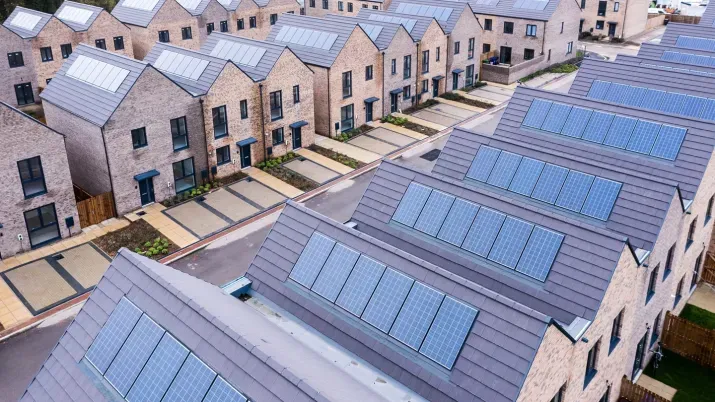ABS in 2021: Spread Tightening and Supply Surprises
TwentyFour
In looking ahead to what 2021 may hold for European ABS it is impossible to avoid the journey across 2020, a year where many market participants had been positioned for a recession of unknown origin, though certainly not one of the nature or severity we have seen.
Equally surprising to us was the speed at which global markets dusted themselves off, disseminated the sheer size of fiscal and monetary intervention and embarked on a rapid technical spread retracement. This momentum received further impetus in November when the US election result, positive news on COVID-19 vaccines and the prospect of a Brexit resolution looked to have set the scene for a coordinated global recovery in 2021. That the solvency of the banking system was never called into question during 2020 provided more certainty for policy effectiveness and ultimately corporate solvency as liquidity flooded in quickly (though it did feel like an age in late March).
We feel fiscal and monetary stimulus in Europe and elsewhere is here to stay through this year, which should help provide further stability for a broad-based economic recovery. We feel rates have largely halted their advance into negative territory and other monetary tools, such as the ECB’s PEPP and TLTRO programmes, will likely be preferred. The exception may be the Bank of England, which has a small scope to move to zero rates on account of continued macro lag – even with a Brexit deal sown up. Risk-free products, being also effectively ‘return-free’, are in our view weighted towards underperformance compared with both other areas within fixed income and their recent historical performance, particularly at the long end if inflationary fears bubble at any point.
ABS fundamentals
2020 saw broadly correlated pan-European policies rolled out to support household wages, jobs and also businesses, nuanced by country specifics and repeatedly extended. The impact on jobs has varied across the demographics of European society, with lower wage workers and specific sectors like retail bearing the brunt. The same is true of the most exposed corporate sectors, again such as food and retail, with challenging trading environments for smaller businesses many of which were often forced to shut.
However you cut it, these schemes are unprecedented in scale and should help provide a safety net for ABS pool performance well into 2021. Compared to many other sectors of fixed income, European ABS pools tend to have a lower correlation to these most exposed workers or businesses – home buyers for example tend to be older with longer credit histories – but we do expect pool performance to weaken in 2021, in particular as we expect unemployment to reach peak levels towards the end of the year.
We think the current foreclosure moratorium being widely used across Europe will likely end during 2021 and may cause legal logjams, but we feel policy will continue to favour forbearance over foreclosure, and indeed there is regulatory pressure for this to be the case. Despite this delay we expect residential, commercial and corporate defaults to peak this year. Leveraged loan default rates skimmed 2% in 2020, a far cry from many analysts’ worst fears, and we are broadly on consensus in considering a 4% peak in 2021, meaning we see this as a problem for leveraged loan investors that do not benefit from CLO protections, as well as investors in CLO equity but not CLO debt.
With excess labour supply it is difficult to see personal incomes gaining much in 2021, but European households continue to have some relief through cheap financing from a starting position of modest leverage. We also see potential for pent-up consumer demand available for release in 2021; savings rates rocketed to historically high levels (the Q2 UK number stood at 29.1% versus recent levels of 5-6%) as a cautious consumer cut back, and for ABS this reassures us that generally prime borrowers act prudently and themselves carry ample debt service capability into 2021.
Lending has surprised us and looks set to continue at a strong pace even after the overhang is cleared. A consequence of very few failed lenders (in sharp contrast to the global financial crisis) will in all likelihood be to resume competition in pricing and credit standards, a potential risk further down the line.
We are however mildly bearish on asset values, primarily housing and autos once the short term pent-up momentum fades as we expect. There are some potential outliers here, with Rabobank for example forecasting a 5.5% uptick in Dutch house prices. Our central view is that a broader economic recovery and renewed confidence will materially dampen the downside and remove fears of double digit falls in house prices.
Two sectoral risks stick out for us in 2021. The first is uncertainty and risk in commercial property loans, subject to similar safeguards this year but with far less predictability on structural demand and valuations going forward. The second is SME lending, an area where emergency funding through loans and grants was hurriedly undertaken by banks on the basis of government guarantees. Of the limited number of SME ABS deals within the European ABS universe (primarily where sponsors are fintech or non-banks), default rates have neared double digits and we see a material risk this is the start of a protracted period of pain, one that could become politicised as commercial considerations gain importance for risk management.
Spreads and performance
We expect a fast pace for European ABS spread tightening in Q1 2021 as an early end to the year by many participants will create some catch up from Q4 2020.
We expect issuance will once again surprise forecasters, this time to the upside given underestimated borrowing needs, desire from banks to expand balance sheets and improved ABS cost of funding for issuers. We feel issuance will be close to reaching €100bn for 2021, the high water mark in recent years and out of kilter with corporate markets where bumper 2020 issuance levels should lead to a slight reverse.
European ABS remains one of the few fixed income products where central bank buying has not completely dominated the landscape. The ECB’s ABSPP, which now stands at €29.7bn[1], saw net purchases of just €1.3bn in 2020 and we expect a continued underwhelming presence through 2021. Interestingly for the US, some analysts see a net reduction in agency MBS purchases by the Fed of around $200bn.
We expect CLO issuance to be very active with a solid €25bn of new issuance for this year, but with tens of billions more in refinancings as a result of both aging deals and expensive 2020 offerings entering callable periods. Important to this is the cost of European AAA CLOs which, in part as a result of a rates floor, look cheap versus both their US equivalents and other parts of fixed income and are increasingly well bid as evidenced by auction volumes. Tiering across CLO managers and vintages we believe is set to continue and we think potential value can be found at the start of a new cycle even through underperforming managers.
It is also worth mentioning that the sensationalised headlines around the leveraged loan market and swift comparisons to US subprime inevitably did not materialise; of those bonds put on watch by the ratings agencies, just 13% of BBs and 2% of BBBs were downgraded and a good chunk have recently seen rating reversals following the low levels of loan defaults that have transpired.
Away from CLOs, we think improved funding costs should also continue to provide markets with more interesting call opportunities from legacy ABS. We saw Paragon clean up pre-2008 deals in 2020 by utilising bank deposits and central bank support. Tighter spreads will ultimately make refinancing economics more compelling for all sponsors this year.
Capital relief focused ABS deals should regain traction, potentially helped by the introduction of a new synthetic STS label, but primarily driven by Common Equity Tier 1 (bank capital) optimisation and for the first time an urgency for ‘real’ credit risk mitigation. The balance between investors chasing income and issuers looking to move credit risk has the potential to create what we would consider to be poor risk-adjusted investment returns, and as such we believe caution is warranted here, particularly in the early stages of a new cycle.
With lending firmly on an expansionary footing, we have already seen signs that non-performing loan (NPL) pool sales and securitisations are back on the menu. With a now established market, we expect banks will look at offloading legacy and new NPLs as well as performing non-core at the back of 2021 and beyond.
CMBS will provide tests given the somewhat uncertain outlook for some sectors in particular but also may offer positive value relative to other areas of ABS if sponsors are willing to offer strong covenants to cater for existing risks.
Few surprises for ABS
Excess income versus most other fixed income products unsurprisingly remains one attraction of European ABS in 2021, and while capital weightings remain an impediment for the attraction of new insurance buyers, the technical from stable issuance levels will in our opinion stay a dominant factor.
With an expectation that spreads will continue to compress across fixed income, in our view many parts of the universe can ill afford to have performance adjusted further for defaults, particularly passive indexed funds. Our analysis indicates European ABS investors can carry forward little concern about nasty default surprises, and this is likely to be important when considering total returns for 2021.







